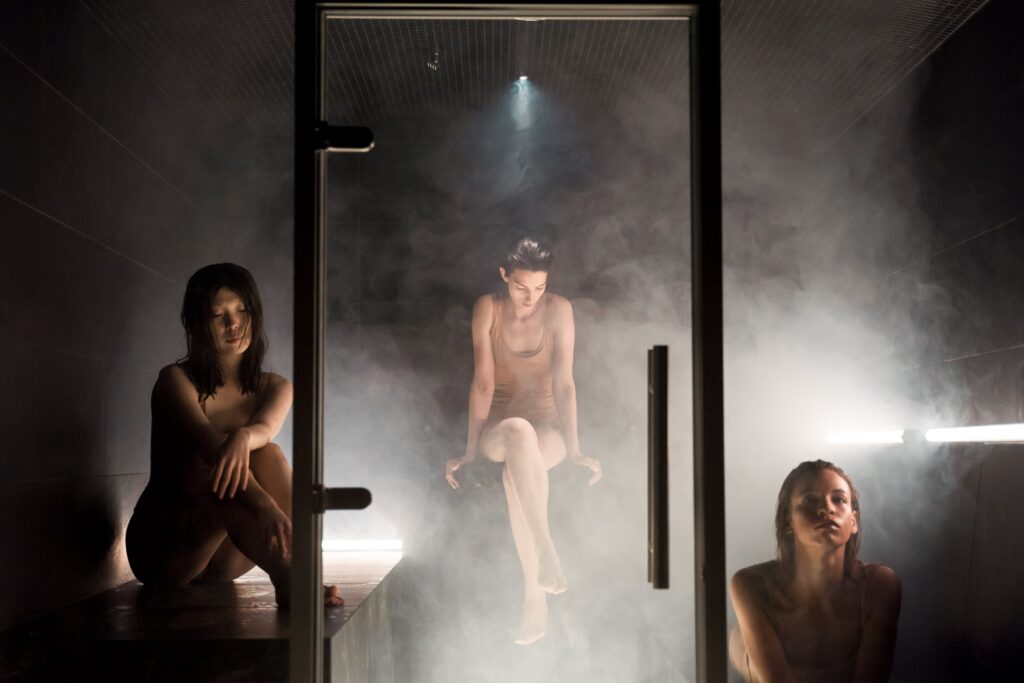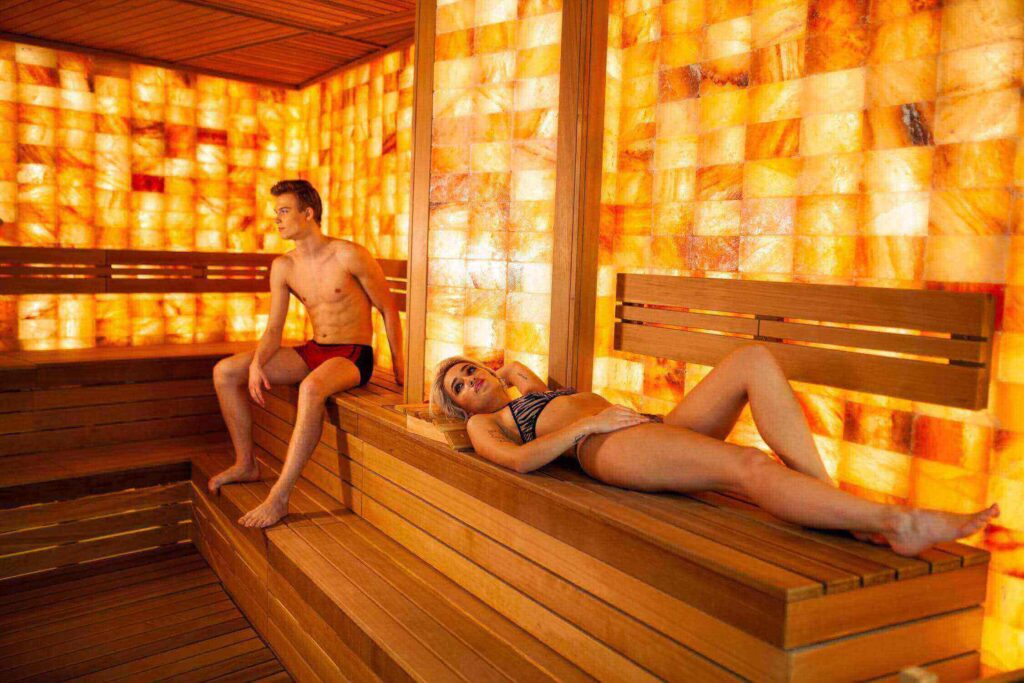Reducing one's body fat percentage and weight is a common health objective that many people pursue for both medical and aesthetic reasons. I doubt there is a single person on the planet who would say no to losing a few pounds or cutting back on the occasional fatty meal. This article summarizes clinical research showing that exposure to natural red light treatment can help people lose weight, tone their bodies, decrease their risk of developing cellulite, and lessen the visual effects of obesity.
Many people want to reduce their weight in a safe and effective manner so that they can enhance their health or feel better about the way they look. If you've tried losing weight before and been disappointed by the results you got from dieting, appetite stimulants, or other methods, red light therapy could be worth a try for you. Clinical trials have shown that it is effective at eliminating fat deposits, leading to a reduction in body mass. Check out Portable Sauna Melbourne specialists in providing solutions to your problem.
Red light therapy is most widely lauded for its ability to reduce discomfort. On the other hand, it helps with muscle regeneration after injuries and can alleviate persistent skin issues like scarring and aging-related skin damage. What is red light therapy for weight loss? How does it work? Might it help you lose weight? All these questions and more will be answered in this article.
Getting in shape seems to be on everyone's mind these days. All the moms in the world want their kids to have a toned, fit-looking body thanks to the rise of body image trends brought on by social media. Even though more and more people are making weight loss their top priority, not everyone has the same level of success. Consistently eating well and exercising may be challenging in and of itself, but they may also fail to meet the needs of some people and leave even those who are successful at doing so feeling unsatisfied.
If you have a hard time losing weight in certain regions, such the stomach, back, inner thighs, or even the chin and face, red light therapy may be the solution you've been waiting for. Certain wavelengths of light used in red light therapy are thought to break down fat cells.
FAQs About Infrared Light
Patients report feeling little more than a nice warmth during Red Light Therapy, which is a non-invasive alternative to liposuction. For a great many years, Low-Level Light Therapy has been the subject of research and practice for a variety of different biomedical applications. This method of body sculpting does not include any surgical incisions.
It depends on a variety of things, including the number of inches you wish to lose, the part of your body that you are concerned about, your body fat proportion, your eating habits, and your level of physical activity. In a typical treatment plan, the patient will respond well after 12 sessions spread out over 4-6 weeks. In most patients, one session results in a burning fat ranging from half an inch to two and a half inches. Including our Whole Body Vibration Exercise improves overall performance and outcomes. A higher percentage of body fat may necessitate further doctor's appointments.
Inch loss can be assisted by red light therapy, often known as lipo light. It is for reducing blotches and spots. It is advised that you participate in a program for weight loss in addition to the treatment to boost your health if your body fat percentage is greater than 25%. We have developed an efficient program, and there is no cost associated with the nutritional evaluation.
The fat that is removed after treatment with Red Light Therapy is credited to the fat being discharged into the lymph system. This is true whether the fat being removed is from the back, arms, legs, or abdomen. After each session, you should aim to burn at least 300 calories so that the fat cells in your lymphatic system are removed correctly and completely, and the fat is burned up. This can be accomplished in our very own fitness centre. If you do not, there is a possibility that your session will become irrelevant and that the treatment may have a contrary effect on your body.
Following the initial session, most patients have already seen meaningful improvements. After just one session of 20 minutes of red light therapy, we regularly observe decreases of 1-2 inches in belly circumference. (The total reduction in circumference is determined by adding the measurements taken at the navel, two inches above, and two inches below.)
What Are the Mechanisms Through Which Red Light Therapy Helps in Reducing Body Fat?
While some studies have shown promising results, others have shown no correlation between red light therapy and reduced fat storage. Despite the lack of data supporting its use for this purpose, researchers remain optimistic that improvements to its therapy are possible in the not-too-distant future. Red light therapy, it has been hypothesized, necessitates longer periods of exposure and recovery before any measurable fat loss may be seen.
We do know that a mixture of red and near-infrared light can cause a systemic release of lipids from fat cells, resulting in weight reduction.
The combination of these two lights allows red light waves to enter the skin around 5 mm below the surface. To boost cellular energy production, they can avoid the cell's outermost layer, or epidermis, and instead focus on improving mitochondria. After then, the skin is exposed to near-infrared radiation, which causes the light to be absorbed by the skin and underlying tissue. As a result of the shattering of water molecules, toxins and lipids are released.
As a result, adipocytes (our body's fat cells) are able to absorb red and near-infrared light waves. Adipocytes are the cells in our body that are in charge of storing fat. As a result of their joint efforts, the toxin and lipids are absorbed into the bloodstream and then excreted from the body via sweat. Also, check out the Portable Sauna Melbourne page, which includes all the information regarding Portable Saunas that you could possibly require.
Although it is true that the body's tissue and cells may absorb both of these light waves between the outliers of the 600 and 1000 nm range to combat obesity, not every frequency that occurs between these outliers has been shown to be useful in accomplishing these results.
Using RLT to Curb Your Appetite
While looking for medical aid to ease hunger, patients often contemplate surgical procedures like gastric bypass or lap band surgery. This is an aggressive and potentially harmful approach to weight loss. Treatment with red light has been shown in recent studies to decrease hunger and facilitate weight loss.
Red light may help you control your weight by affecting leptin and ghrelin, two hunger hormones, according to a 2012 study published in the International Journal of Endocrinology.
Suppressing hunger is the job of the hormone leptin, while ghrelin has the opposite effect and makes you feel more hungry. Controlling these hormones may prevent weight gain and also improve how much you consume. After losing weight, this is a healthy and non-invasive approach to keeping it off.Are you looking for the Melbourne Sauna? Stop looking; Portable Sauna has got you covered in every way.
The Role of RLT in Tightening the Skin and Reducing Cellulite
Red and near-infrared light therapy for weight loss has the added benefit of reducing the subcutaneous fat that can cause cellulite to show through the skin. When abnormal amounts of fat combine with abnormal amounts of collagen and elastin in the dermal layers of the skin, the result is cellulite.
Red light therapy is effective because it increases fibroblast growth factor, which in turn restores collagen production. Collagen is synthesized by fibroblasts, which also encourage its migration through cell membranes, leading to firmer skin. Although decreasing weight and tightening your skin work hand in hand for the best-looking results achievable, red light treatment is an integral part of the weight loss process. That's why red light treatment is such a crucial part of getting slim.
Infrared and red light therapy has been shown to be effective in reducing cellulite by increasing local blood flow and promoting healthy blood vessel function. Reduced blood flow to the skin is a contributing factor in the development of cellulite. This reduces the likelihood that skin will absorb vital nutrients by diffusion, which in turn weakens the skin's connective tissue.
Scientific Studies Have Shown That Red Light Therapy Can Aid in Fat Loss and Weight Management.
This article provides a brief overview of the clinical research done on red light therapy in relation to weight loss and self-perception.
There was a study done in 2011 on the connection between red light treatment and the diminishment of cellulite. Women between the ages of 25 and 55 participated in the trial, and they were randomly assigned to either a treadmill exercise group or a red light treatment exercise group. Thermographic photographs documenting the changes in thigh circumference and cellulite throughout the duration of the trial showed that the combination of red light treatment and exercise was more effective than exercise alone. The results suggest that combining red light therapy with treadmill exercise can boost attractiveness.
There are many people who want to lose weight because they want to appear better in the mirror or on the beach, and red light treatment can help them achieve that goal. The terms "body contouring" and "body sculpting" are used interchangeably to describe a wide variety of fat-reduction and aesthetic-enhancing techniques. There are invasive surgical options as well as less invasive nonsurgical options. Nevertheless, many of them fail to deliver the goods and come with a laundry list of unwanted side effects. Red light treatment has been shown to be one of the most effective strategies for making physical changes without causing any harm to the body.
Red light treatment for weight loss and body shaping was the subject of research recently published in the Journal of Obesity Surgery. Red light therapy, the researchers found, was effective in lowering both body mass index and waist size. This 2011 randomized, double-blind study examined the effects of light therapy at 635-680 nm on the waist circumferences of its subjects over the course of four weeks. It was determined at the study's conclusion that all participants experienced statistically significant reductions in waist circumference.
Light therapy recipients in a similar study published in Lasers in Surgery and Medicine lost significant amounts of weight and circumference everywhere over the body. Fat loss can be more specific with the use of red light therapy. The results of the study suggested that exposure to natural sunshine could reduce the size of treated areas of the body, and this led the researchers to the hypothesis that light therapy could have the same effect.
A study published in the same journal in 2013 looked into the benefits of red light therapy with a wavelength of 635 nanometers and found it to be effective for reducing fat around the hips, thighs, and waist. The average participant lost 2.99 inches of height and weight by the end of the experiment compared to their initial measurements. Each of the hips, the waist, and the thighs may also notice a reduction. The study's results demonstrated the safety and efficacy of treating patients with red light at this wavelength. Have a look at the Portable Sauna Melbourne options we have available to find a solution to your problem.
Explain the Findings of the Research.
Fifty-four individuals who were overweight or obese participated in a study sponsored by Erchonia, the manufacturer of Zerona. Patients were predominantly white men, which was surprising given that women are more likely to seek help for their weight. Every week for six weeks, individuals got treatment. Six weeks later, participants saw a significant loss of overall hip, waist, thigh, and upper abdominal circumferences of about 13 centimeters (nearly 5 inches). Participants lost an extra 2 centimeters two weeks after treatment ended (about 0.8 inches). Nonetheless, patients were cognizant of the fact that they were undergoing therapy, and thus they might have made adjustments to their lifestyle (such as a more healthful diet or more vigorous exercise) to improve their chances of recovery. As the patients in this study weren't compared to a control group, we can't determine how far they would have come without treatment. The duration of this reduction is also unknown because patients were only monitored for two weeks after their decisive therapy ended.
Some studies are looking at whether infrared treatment can boost the beneficial benefits of exercise regardless of whether or not infrared treatment is good on its own. This is done by analyzing data from fitness programs involving fat people. Also, only 50% of patients receive light therapy while the other 50% do not. This study's results add credence to the idea that infrared therapy can boost the weight loss benefits of exercise. Yet, since the study was not conducted properly, a definitive answer is elusive. In Brazil, scientists looked at the possibility that obese women's heart disease risk could be reduced by low-level laser therapy (LLLT) in addition to aerobic exercise. 5 Sixty-two female volunteers were given an exercise program and then randomly assigned to either low-level laser treatment (LLLT) or a placebo for four months. Everything about the trial went smoothly. Low-level laser therapy enhanced the positive effects of aerobic exercise on women's heart health (LLLT). The researchers found that low-level laser therapy successfully reduced the women's overall body fat percentage as well as their abdominal fat percentage. However, the women in the study were not followed up with after the four-month treatment period ended, so we do not know if the effect lasted.
In addition, wIRA, or water-filtered infrared radiation, is being studied to see if it might help patients lose weight.
All forty patients in this study engaged in aerobic exercise for four weeks, with some also getting wIRA treatment during their workouts. Due to the small sample size and lack of data beyond four weeks, the researchers were unable to draw firm conclusions about the trial's effects on participants' weight or the duration of those effects.
Research on the efficacy of wIRA as a treatment for a wide range of diseases is under underway.
However, there is currently insufficient evidence to conclude how effective it is for weight loss.
Yet, preliminary data suggests that light therapy may temporarily reduce fat, even though studies are small and only follow patients for a few weeks or months. Neither the size of the potential benefits nor the likelihood that they will persist into the future are known at this time. You should exercise frequently and watch what you eat if you want to lose weight, keep it off, and get in better shape. These tried-and-true methods are also suggested since they have been shown to minimize the long-term risk of cardiovascular disease and some malignancies.
Conclusion
Red light therapy can help people lose weight, tone their bodies, decrease their risk of developing cellulite, and lessen the visual effects of obesity. Red light therapy can cause a systemic release of lipids from fat cells, resulting in weight reduction. Red light therapy is effective in reducing cellulite by increasing local blood flow and promoting healthy blood vessel function. Red light treatment for weight loss and body shaping was found to be effective in lowering both body mass index and waist size. Infrared therapy can boost the weight loss benefits of exercise, but a definitive answer is elusive. Low-level laser therapy and wIRA are being studied to help patients lose weight, but preliminary data suggests that light therapy may temporarily reduce fat.
Content Summary
- Reducing one's body fat percentage and weight is a common health objective that many people pursue for both medical and aesthetic reasons.
- This article summarizes clinical research showing that exposure to natural red light treatment can help people lose weight, tone their bodies, decrease their risk of developing cellulite, and lessen the visual effects of obesity.
- What is red light therapy for weight loss?
- While some studies have shown promising results, others have shown no correlation between red light therapy and reduced fat storage.
- We do know that a mixture of red and near-infrared light can cause a systemic release of lipids from fat cells, resulting in weight reduction.
- As a result, adipocytes (our body's fat cells) are able to absorb red and near-infrared light waves.
- Although it is true that the body's tissue and cells may absorb both of these light waves between the outliers of the 600 and 1000 nm range to combat obesity, not every frequency that occurs between these outliers has been shown to be useful in accomplishing these results.
- Treatment with red light has been shown in recent studies to decrease hunger and facilitate weight loss.
- The Role of RLT in Tightening the Skin and Reducing CelluliteRed and near-infrared light therapy for weight loss has the added benefit of reducing the subcutaneous fat that can cause cellulite to show through the skin.
- Although decreasing weight and tightening your skin work hand in hand for the best-looking results achievable, red light treatment is an integral part of the weight loss process.
- Infrared and red light therapy has been shown to be effective in reducing cellulite by increasing local blood flow and promoting healthy blood vessel function.
- Reduced blood flow to the skin is a contributing factor in the development of cellulite.
- This article provides a brief overview of the clinical research done on red light therapy in relation to weight loss and self-perception.
- Red light treatment has been shown to be one of the most effective strategies for making physical changes without causing any harm to the body.
- Red light treatment for weight loss and body shaping was the subject of research recently published in the Journal of Obesity Surgery.
- Red light therapy, the researchers found, was effective in lowering both body mass index and waist size.
- Fat loss can be more specific with the use of red light therapy.
- A study published in the same journal in 2013 looked into the benefits of red light therapy with a wavelength of 635 nanometers and found it to be effective for reducing fat around the hips, thighs, and waist.
- Have a look at the Portable Sauna Melbourne options we have available to find a solution to your problem.
- Fifty-four individuals who were overweight or obese participated in a study sponsored by Erchonia, the manufacturer of Zerona.
- Every week for six weeks, individuals got treatment.
- Six weeks later, participants saw a significant loss of overall hip, waist, thigh, and upper abdominal circumferences of about 13 centimeters (nearly 5 inches).
- Participants lost an extra 2 centimeters two weeks after treatment ended (about 0.8 inches).
- Nonetheless, patients were cognizant of the fact that they were undergoing therapy, and thus they might have made adjustments to their lifestyle (such as a more healthful diet or more vigorous exercise) to improve their chances of recovery.
- As the patients in this study weren't compared to a control group, we can't determine how far they would have come without treatment.
- The duration of this reduction is also unknown because patients were only monitored for two weeks after their decisive therapy ended.
- Some studies are looking at whether infrared treatment can boost the beneficial benefits of exercise regardless of whether or not infrared treatment is good on its own.
- This study's results add credence to the idea that infrared therapy can boost the weight loss benefits of exercise.
- In Brazil, scientists looked at the possibility that obese women's heart disease risk could be reduced by low-level laser therapy (LLLT) in addition to aerobic exercise.
- 5 Sixty-two female volunteers were given an exercise program and then randomly assigned to either low-level laser treatment (LLLT) or a placebo for four months.
- Low-level laser therapy enhanced the positive effects of aerobic exercise on women's heart health (LLLT).
- The researchers found that low-level laser therapy successfully reduced the women's overall body fat percentage as well as their abdominal fat percentage.
- However, the women in the study were not followed up with after the four-month treatment period ended, so we do not know if the effect lasted.
- In addition, wIRA, or water-filtered infrared radiation, is being studied to see if it might help patients lose weight.
- All forty patients in this study engaged in aerobic exercise for four weeks, with some also getting wIRA treatment during their workouts.
- Due to the small sample size and lack of data beyond four weeks, the researchers were unable to draw firm conclusions about the trial's effects on participants' weight or the duration of those effects.
- Research on the efficacy of wIRA as a treatment for a wide range of diseases is under underway.
- You should exercise frequently and watch what you eat if you want to lose weight, keep it off, and get in better shape.






